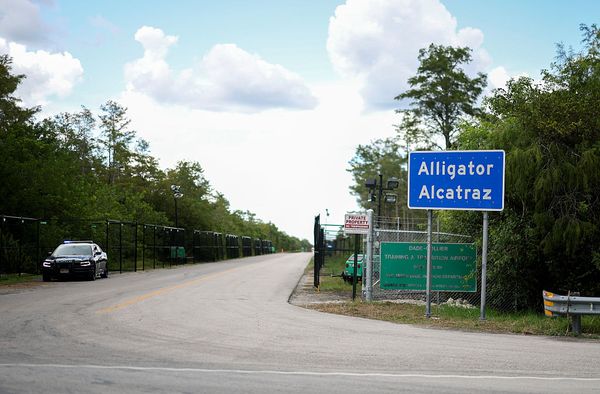
Thermal bathing is an interesting concept, anthropologically speaking. Archaeologists have traced the practice back to before 11,000 BC – though experts aren’t entirely certain whether a dip in a volcanic hot spring at that time in history would have been ritualistic, medicinal or simply a way to keep clean.
Hot springs remain a fascinating aspect of the Earth’s naturally-formed landscape – created when water is heated by contact with hot rocks or magma within the Earth's crust before it rises to the surface through faults – and they appear all over the globe. They’re also seemingly tied to several communities that live long, healthy lives.
A few years ago, in the Czech spa town of Karlovy Vary, I was introduced to “the drinking cure” – hot sulphurous water that welled up across the picturesque town and filled pools for bathing. In Iceland last month, I dipped in Hvammsvik’s waters while taking in outstanding scenic views. In Japan last year I spent a couple of days visiting the “seven mystic Onsen” – bathhouses built on top of springs in the town of Kinosaki Onsen. And in Costa Rica, just weeks ago, I dipped in impossibly clear pools beneath the Arenal volcano.
Even the UK plays host to several notable hot springs. Bath is famous for its mineral-rich thermal pools and was likely a special site even before it became England’s first spa town under Roman rule – archaeological evidence indicates human activity around Bath’s natural springs as far back as 8000 BC.
These naturally warm pools, along with being pleasant to sit and swim in, are also reported to restore vitality, soothe aches and pains and promote long life. I can’t deny that I’ve always felt better after spending time in geothermal springs around the world, but perhaps that’s simply because the experience is relaxing. Could pure relaxation be enough to associate these places with healing and long life across myriad ancient cultures to the extent that we still believe in their health-giving properties today?
I was keen to investigate the properties of these warm volcanic waters and explore the science behind the claims, so I spoke with two longevity doctors about the supposed healing powers of the hot spring.
What are the health benefits of hot spring bathing?
A GP specialising in functional and longevity medicine, Dr Harpal Bains, told me: “Scientifically the evidence is limited and largely observational but there are some plausible mechanisms that align with what we know about hot springs and longevity and wellbeing. The combination of mineral exposure, heat stress, relaxation and connection with nature may all play a role.”
It’s well known that hot springs contain several trace elements that supposedly benefit health. But few of these elements can actually be absorbed through the skin in large doses. Dr Enneyat, founder of the HUM2N longevity clinic says, “there is evidence that trace minerals present in hot springs can be absorbed through the skin, though the degree varies and is dependent on the mineral content and composition of the water.”
Dr Bains adds: “Theoretically, some minerals can be absorbed through the skin in very small amounts, particularly magnesium and sulfates. The extent is however minimal compared to dietary intake.
“The benefit is less about the minerals themselves and more about their local effects – soothing the skin, relaxing muscles, improving blood flow and perhaps mild detoxification via sweat and improved circulation. Silica-rich waters, for example, are often linked to softer skin and reduced irritation, while sulfur-rich springs can have mild antimicrobial and anti-inflammatory effects.”
In short, most springs offer different mineral compositions and while certain combinations of minerals have been shown to benefit skin and muscles to some extent in clinical settings, there isn’t a single study that shows the common impact of every supposed health-giving hot spring.
The healing power of heat
However, it’s not just about the mineral content of the water. “Beyond the minerals and composition, heat itself is a powerful therapeutic tool, with immersion in warm water shown to improve circulation, reduce inflammation, and shift the nervous system into a restorative state,” notes Enayat.
“Spending time in warm water could help to lower blood pressure, improve endothelial function, relax muscles, and reduce joint pain. It could also improve insulin sensitivity, support detoxification through sweating, and relieve stress.”
A study from 2020 showed that of 126 people with musculokeletal pain issues, three quarters believed in the healing powers of hot spring water. The study also showed that the belief hinged on consistent visits to the springs, rather than a one-off dip.
Dr Bains explains that a consistent practice could offer tangible benefits. “When you bathe in a hot spring, you’re exposing your body to thermal stress, which can trigger hormesis – a 'good' stress that encourages resilience.” explains Dr Bains.
“This is similar to what we see with saunas. Regular use has been linked to improved vascular function, reduced inflammation, better circulation and possible cardiovascular benefits. A well-known Japanese study found that frequent bathing (both hot springs and standard baths) correlated with lower risk of heart disease and stroke.”
Are all hot springs safe?
In addition to the benefits, there are very few risks. The pools in a location like Hvammsvik in Iceland are intentionally cooled with seawater to avoid overheating. In the circuit, each pool is warmer than the next and none present a threat to wellbeing. It’s down to the individual on whether they choose to plunge into cold seawater to experience the benefits of contrast therapy after warming up in the hot springs.
Personally, I didn’t opt for this experience because my personal brand of wellness is less about flagellation and more about soothing my nervous system – my trip to Iceland comprised fresh mountain air, geothermally grown seasonal vegetable dishes and spa treatments at The Edition hotel in Reykjavik and that, to me, is peak wellness.
Some springs are potentially a little too hot for humans. Costa Rica’s Arenal volcano is active and creates thermal pools across the region. I bathed in some during a visit to the area that were managed by resorts to ensure safety and cleanliness, but off the beaten track it’s worth being wary and keeping a look out for signage that will advise you to steer clear.
Other springs in Russia, Japan and the US reach temperatures that are considered to be unsafe. This is why consulting with experts at hot spring sites is encouraged. Particularly if you’re visiting a location like Yellowstone Park where the pools can also be acidic.
Dr Enayat explains that, “Generally, hot springs and thermal baths are safe and well tolerated. The main risks are practical ones, overheating, dehydration, or skin irritation for those with pre-existing conditions like dermatitis. In rare cases, extremely hot pools may cause burns.”
Are hot spring waters a miracle cure?
There are several factors at play when it comes to the belief that these volcanically-warmed waters promote good health. Heat has been shown to benefit the body and ease fascial, muscular and joint pain. The relaxing nature of being submerged in warm water can also offer a reset for the nervous system, which can support mental health. By repeating this, it might be possible to keep both muscles and the mind more relaxed.
In addition to these benefits, hot springs are usually social environments. Studies have shown that people who live the longest in the world’s blue zones – locations like Nicoya in Costa Rica and and Okinawa in Japan – all share valuable community bonds. There’s a strong causal relationship between community and long life, and conversely between loneliness and a shorter lifespan.
“Hot springs are often in naturally beautiful, low-pollution environments, so you’re breathing cleaner air and reconnecting with nature – both known to reduce cortisol and improve mood.” explains Dr Bains.
“There’s also a strong social aspect, especially in Japan and parts of Europe, where communal bathing is an act of connection and routine self-care. That sense of ritual, presence and community itself may contribute to the longer, healthier lives seen in Blue Zones, where social integration and stress reduction are key factors.”
“While there isn’t proof that hot springs directly extend lifespan, the combination of mild heat stress, mineral exposure, relaxation and time in nature supports many of the biological pathways linked to longevity – lower inflammation, improved circulation, better sleep and reduced stress,” she adds.
Whether or not my love for hot springs will unlock the secrets of longevity and help me live forever remains to be seen, but experts agree that this ancient practice certainly offers more benefits than just pure relaxation.
Enjoying this? Sign up to my weekly wellness newsletter: Well Enough by Emilie Lavinia







